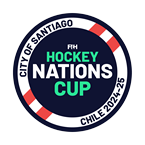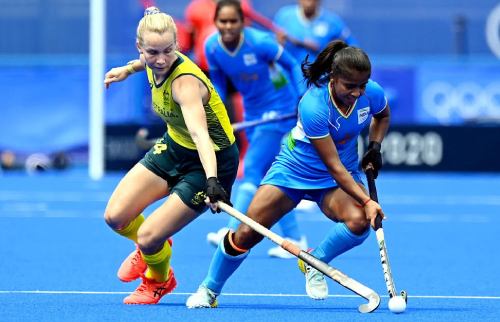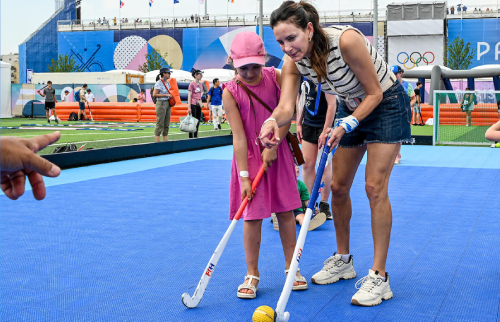
With the sixth edition of the FIH Hockey Indoor World Cup set to take place in Belgium in February 2022, we look at the creation of the iconic trophies that the 24 teams – 12 men, 12 women – will be fighting for over five intense, action-packed days at the Country Hall de Liège.
The story begins almost 20 years ago in the German city of Leipzig, which was chosen to host the inaugural FIH Indoor Hockey World Cup in 2003. A Leipzig-based designer named Bert Noack – who as well as being a highly skilled trophy creator was also a passionate hockey man, having played the sport since the 1970s – greatly impressed the Deutsche Hockey-Bund (DHB) with his designs. Subsequently, Noack was given the green light to create these two wonderful pieces of sporting silverware.
"When I was asked in 2002 whether I could imagine designing two indoor hockey world cups, I knew I had to do it. You wait for an opportunity like this," Noack recalled in an interview with the DHB in 2014. "As a player, I was not able to hold such an important trophy in my hands. Perhaps it was supposed to happen this way after all.”
For Noack, who prior to designing the FIH Indoor World Cup trophies had primarily implemented the ideas of other designers, this was a chance to showcase his own artistic abilities by creating something truly inspirational.
"Some trophies awarded today are actually nothing special anymore”, continued Noack. “Even the ancient Greeks were more interested in material things. Nevertheless, trophies - I actually prefer to speak of sculptures or sculptures - can have a special meaning if they are more than just one of the mass-produced goblets, if they have a soul and a genuine connection to the work that was done for them.”
Alongside sculptor Torsten Freche and a small team of workers, Bert Noack set about creating forms that have a deep, specific connection to indoor hockey. The women's trophy features six athletes to represent the six-a-side format, while the round shapes of the men's trophy are reminders of the rebound sideboards used in the indoor game.
Noack and his team spent nine months perfecting their creations, with the man himself being fortunate enough to engrave the names of the winning teams – both Germany – onto the prizes at the Arena Leipzig. Both trophies are made from solid bronze with partial gold plating, with the women’s trophy weighing seven kilograms and the men’s twelve. Although their material value has never been disclosed, to the hockey family they are, unquestionably, priceless.
Bert Noack is the fourth generation of his family to run his bronze picture foundry, which was founded by his great-grandfather Traugott Noack in Leipzig in 1899. Among other things, the Noack family are responsible for the creation of the Johann Sebastian Bach Monument, which sits in front of Leipzig’s Thomas Church.
For more than 100 years now, artworks from the Leipzig bronze picture foundry have not only shaped the Leipzig cityscape but are also known far beyond the borders of Germany. Sculptures from Leipzig have been exhibited in New York’s world-famous Metropolitan Museum, whilst tennis star Martina Navratilova also has a Noack creation in her vast trophy cabinet.
When the FIH Indoor Hockey World Cup competition returned to the city of Leipzig in 2015, Noack and his team reconnected with their creations and restored them to a state of perfection. For the second time, they were also given the honour of engraving the names of the winning teams – on this occasion, the men and women of the Netherlands – at the end of the competition.
Bert Noack is incredibly proud that his two hockey cups have now been in the hands of the best indoor hockey players in the world over the past two decades. The DHB could hardly have found a more experienced man for the crucially important task of creating these wonderful trophies.
More details on the FIH Indoor Hockey World Cup are available here.
For more information about FIH and hockey in general, please download the Watch.Hockey app or follow the FIH social media channels - Facebook, Instagram and Twitter – and website.
#IndoorHockey
#IHWC2022
#HockeyInvites
With thanks to Christoph Plass / DHB.
























